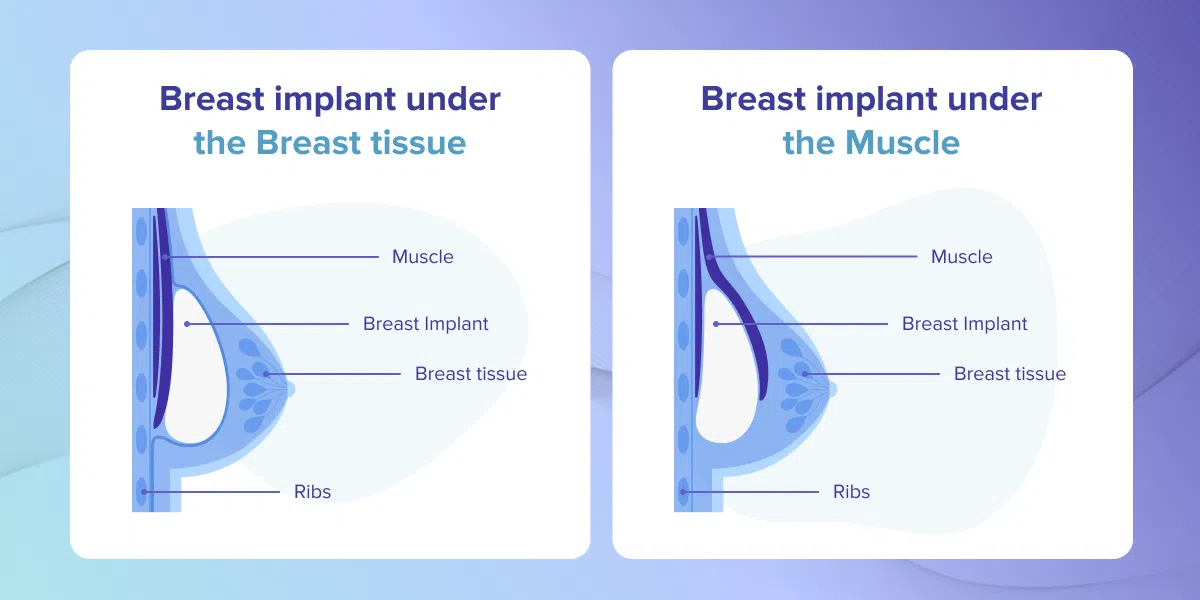What to Expect Post Breast Augmentation: Recovery and Care
June 11, 2024

Breast augmentation is a transformative experience that can enhance your confidence and make you feel more in control of your appearance. This procedure involves many personal decisions and considerations, including recovery, which can vary based on individual factors and surgical techniques.
It’s important to know what to expect after the procedure so you can plan and make accommodations for your post-op care appropriately. In this blog post, we’ll provide a week-by-week breast augmentation recovery process and address common questions. Let’s dive in.
What to Expect After Breast Augmentation
Immediately following breast augmentation surgery, it’s common to experience swelling, bruising, and discomfort. These symptoms are part of the body’s natural healing process. Your surgeon will likely recommend wearing a support bra to help reduce swelling and support the new breast contours. Pain management will be a priority, and your doctor will prescribe medication to ease any discomfort during the initial days post-surgery.
When Do Breast Implants Feel Normal?
Initially, breast implants may feel firm and sit higher on the chest. Over time, they will soften and settle into a more natural position, a process known as “dropping and fluffing.” This settling generally occurs over the first few months post-surgery. Most women start to see their new breasts feel more like a part of their body within 3 to 6 months after the procedure.
Do You Have Drains After Breast Implants?
The use of drains after breast augmentation depends on the specific technique used and the surgeon’s preference. Drains can help remove excess fluid and reduce swelling in the days following surgery. If drains are used, they are typically removed within a week after the surgery, during a follow-up visit.
How Long After Breast Augmentation Can I Drive?
You can typically start driving again once you are no longer taking prescription pain medication and you feel comfortable enough to handle the steering wheel. This usually takes about 1 to 2 weeks, depending on your individual recovery and the specifics of your surgery.
Before getting behind the wheel again, it’s important to ensure you’re able to perform the necessary movements without pain. It’s a good idea to test out your ability to turn the steering wheel, use the mirrors, and respond to traffic conditions. If any sudden movements cause discomfort, this may indicate that more recovery time is needed. Always follow your surgeon’s specific advice before resuming driving to ensure that you’re not putting yourself or others at risk.
Breast Augmentation Recovery Week-by-Week Timeline
Below is a general week-by-week recovery timeline for a breast augmentation that provides a more detailed overview of what you can expect. Keep in mind that recovery time after breast enlargement can vary from person to person based on the body’s response to the surgery.
Week 1: Immediate Post-Op
Days 1-3: The first few days after surgery are typically the most challenging. You may experience pain, significant swelling, and bruising. Pain medication is commonly prescribed to manage discomfort during this phase. Rest and keep your upper body elevated to help reduce swelling.
End of Week 1: You will likely be able to move around more comfortably. Most surgeons advise against any lifting orstrenuous activities. You should continue wearing a surgical bra or a compression garment as directed by your surgeon.
Week 2: Early Recovery
Start of Week 2: Pain and discomfort should begin to decrease significantly. You can manage pain with over-the-counter medications instead of prescription painkillers.
End of Week 2: Many patients feel well enough to return to work, especially if their job doesn’t require physical activity. However, it’s still important to avoid any heavy lifting or vigorous exercise.
Week 3-4: Gradual Improvement
Week 3: By this time, you should notice a marked decrease in swelling and bruising. You might start light exercises like walking, but it’s crucial to avoid activities that could impact your chest or strain your incisions.
Week 4: You can typically start to engage in more normal activities. Your surgeon may allow you to start gently stretching exercises or lighter workouts that do not involve direct strain on your chest.
Week 5-6: Continued Healing
Week 5: Swelling should continue to subside, and your incisions will begin to heal more fully. You might see your new contours starting to take shape more clearly as the implants settle.
Week 6: Most restrictions on physical activities are typically lifted around this time. You may begin moderate exercise but should continue to avoid high-impact workouts or heavy lifting until cleared by your surgeon.
Months 2-3: Nearing Full Recovery
Month 2: By the end of the second month, your breasts will likely feel much softer and appear more natural as the implants settle into their final position. You should be able to resume all physical activities, including more strenuous exercises, as long as there is no discomfort.
Month 3: Final follow-up visits usually occur around this time. Your surgeon will assess the healing process and the positioning of the implants. Any residual swelling should have subsided, revealing the outcome of the surgery.
Recovery After Breast Implants Under Muscle vs. Over Muscle
The placement of breast implants either under the muscle (submuscular) or over the muscle (subglandular) significantly affects the recovery process:
Submuscular implants are often more painful initially and have a longer recovery time due to the muscle being cut or stretched during surgery. However, it generally results in a more natural look, especially in women with less natural breast tissue.
Subglandular implants recovery may be quicker than submuscular implants because the muscle is not disturbed. Pain and swelling may be less intense, allowing for a somewhat faster return to daily activities.
Each placement option has its advantages and considerations, which should be discussed in detail with your surgeon based on your body type, lifestyle, and aesthetic goals.
Recovery From a Breast Lift and Augmentation
The recovery process for a combined breast lift and augmentation can be slightly different and potentially longer than for either procedure alone. This is because combining these two procedures increases the complexity and extent of the surgery.
Here are some key points about the recovery from a combined breast lift and augmentation:
- Increased swelling and bruising may occur because the surgery is more extensive.
- Longer duration of pain and discomfort is possible due to the dual nature of the adjustments made to the breast tissue, skin, and underlying muscle.
- Wearing support garments longer provides adequate support to the new breast shape and helps heal incisions.
- Incisions may take longer to heal completely, as more incisions are typically involved in a breast lift along with augmentation.
Learn More with a Breast Augmentation Consultation
Breast augmentation is a journey, and understanding the recovery process is crucial for a successful outcome. Remember, every woman’s body reacts differently, and it’s essential to follow your surgeon’s recommendations closely. If you have any concerns during your recovery, do not hesitate to contact your healthcare provider.
Interested in a breast augmentation and/or lift? Dr. Mark Franklin Deutsch — voted Atlanta plastic surgery of 2024 — and his team at Perimeter Plastic Surgery are happy to help. From pre-op to post-op, we’ll be here for you and provide guidance every step of the way.
Contact us online or call 404-255-0886 to learn more and receive a breast augmentation consultation from our award-winning team today!


